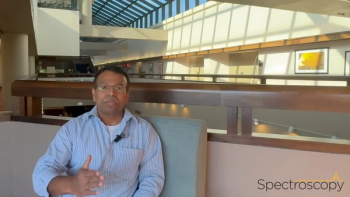
What is the 3I/Atlas Comet?
This brief article highlights the key takeaways from studying the 3I/ATLAS comet and what it means for space exploration moving forward.
This video was made with the help of NotebookLM.
Over the past few months, astronomers and scientists have been keeping a watchful eye on the progress of the 3I/ATLAS comet, monitoring its behavior and analyzing its trajectory across our solar system. This brief article highlights the key takeaways from studying this comet and what it means for space exploration moving forward.
What is the 3I/ATLAS comet?
The 3I/ATLAS comet was first sighted back on July 1st of this year (1). Its sighting is significant because an occurrence like this is rare. The 3I/ATLAS comet is only the third-known object from outside our solar system that was discovered passing through our solar system (1). It is called the 3I/ATLAS comet because it was discovered first by the National Aeronautics and Space Administration-funded Asteroid Terrestrial-impact Last Alert System (ATLAS) telescope in Chile, it is an interstellar object (hence the “I”), and it is the third (“3”) object from outside our solar system that entered our celestial space (1).
Why is it attracting so much attention?
Apart from the rarity of an occurrence like this, the 3I/ATLAS comet is garnering significant attention from astronomers because of its unusual traits. Multiple astronomical observatories, including the James Webb Space Telescope (JWST), Palomar, and SOAR, conducted extensive spectroscopic and photometric observations, revealing a red, organic-rich surface and unexpected activity, even at great distances from the Sun (2–5). A central theme is the debate between two hypotheses: whether 3I/ATLAS is a naturally formed comet with unique interstellar chemistry, or potentially an engineered probe, an idea fueled by non-gravitational accelerations and tentative periodic radio signals (2–5). Therefore, there were questions about whether it has a natural or artificial origin.
Another aspect to 3I/ATLAS that has fascinated astronomers is what scientists have been able to observe. For example, telescopic observations revealed strong outgassing chemistry and unexpected emissions, challenging conventional cometary explanations (2). Meanwhile, the spectrophotometric data showed a red spectral slope, indicating a redder spectrum than typical solar system comets (3). Researchers also noted that the comet is following a hyperbolic path, indicating that it originates from a thick-disk star system (4).
And lastly, another key observation is its activity levels. Astronomers have noted that the 3I/ATLAS comet exhibits a spin period of 16.16 hours and dust mass-loss rates from 0.3 to 4.2 kg/s, indicating unexpected activity levels (5).
References
- NASA, Comet 3I/ATLAS. NASA.gov. Available at:
https://science.nasa.gov/solar-system/comets/3i-atlas/ (accessed 2025-11-24). - Workman, Jr., J. 3I/ATLAS: An Interstellar Enigma—Natural Comet or Engineered Probe? Spectroscopy. Available at:
https://www.spectroscopyonline.com/view/3i-atlas-an-interstellar-enigma-natural-comet-or-engineered-probe- (accessed 2025-11-24). - Workman, Jr., J. Interstellar Comet 3I/ATLAS Shows Its Spectral Secrets Through Palomar and Apache Point Observations. Spectroscopy. Available at:
https://www.spectroscopyonline.com/view/interstellar-comet-3i-atlas-shows-its-spectral-secrets-through-palomar-and-apache-point-observations (accessed 2025-11-24). - Workman, Jr., J. The Red Visitor from Beyond: Unlocking the Secrets of Interstellar Object 3I/ATLAS. Spectroscopy. Available at:
https://www.spectroscopyonline.com/view/the-red-visitor-from-beyond-unlocking-the-secrets-of-interstellar-object-3i-atlas (accessed 2025-11-24). - Workman, Jr., J. Interstellar Comet 3I/ATLAS Shows Mysterious Spectroscopic Activity. Spectroscopy. Available at:
https://www.spectroscopyonline.com/view/interstellar-comet-3i-atlas-shows-mysterious-spectroscopic-activity (accessed 2025-11-24).
Newsletter
Get essential updates on the latest spectroscopy technologies, regulatory standards, and best practices—subscribe today to Spectroscopy.





